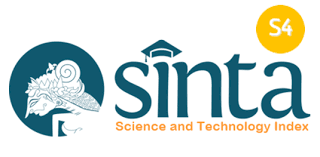PENGARUH RELAKSASI PROGRESIF DAN MEDITASI TERHADAP TINGKAT STRES PASIEN HIPERTENSI
DOI:
https://doi.org/10.37294/jrkn.v1i2.46Abstract
Hypertension is a risk factor to the three biggest causes of premature death. The psychological impact is happening is that patients undergo stress, anxiety, depression, fear and anxiety. The method used is a quasi-experimental research design using design with equivalent control group design. The sampling technique is done by simple random sampling. Number of samples 70 people for a progressive relaxation group and for group meditation. Data analysis techniques of progressive relaxation effect of interventions to decrease stres levels by Paired t-test. Effect of meditation interventions to decrease stres levels also Paired t-test. Effectiveness of progressive relaxation and meditation in reducing stres using independent t-test.The results showed significant effect the progressive relaxation of the stres levels in hypertension patients. The mean value before 56.2571 and 41.7429 afterward, t=7,992 and p=0.000.Meditation can reduce stres levels in hypertension patients significantly.The mean value previously 59.4000, 24.1714 afterward, t = 11 223, p = 0.000. Meditation more effective than progressive relaxation in lowering stres levels in patients with hypertension in the Health Center of North Kuta, Badung, 2016. The difference in means at 14.5143 while the progressive relaxation group the mean difference in the meditation group 35.2286, t=-5712 and p=0.000. Conclusion the progressive relaxation and meditation can lower the stress level in patients of hypertension (p=0.000).Meditation is more effective to lower the stress level in patients of hypertention (p=0.000)
Key Wards: Progressive Relaxation, Meditation,Stress,Hypertention

 TEMPLATE JURNAL
TEMPLATE JURNAL








